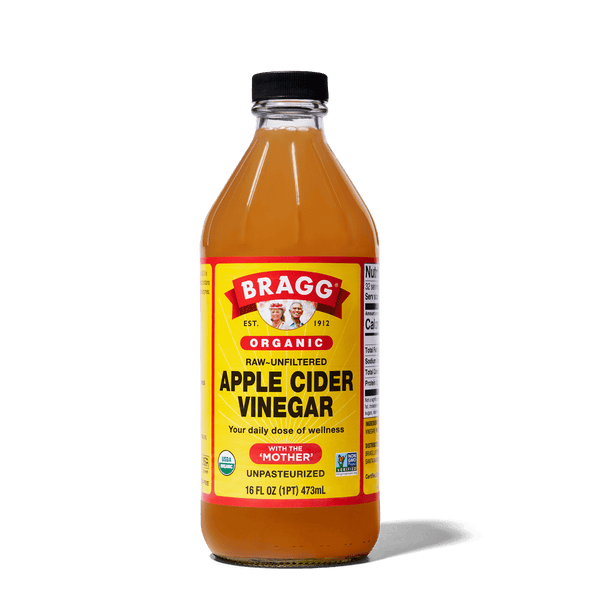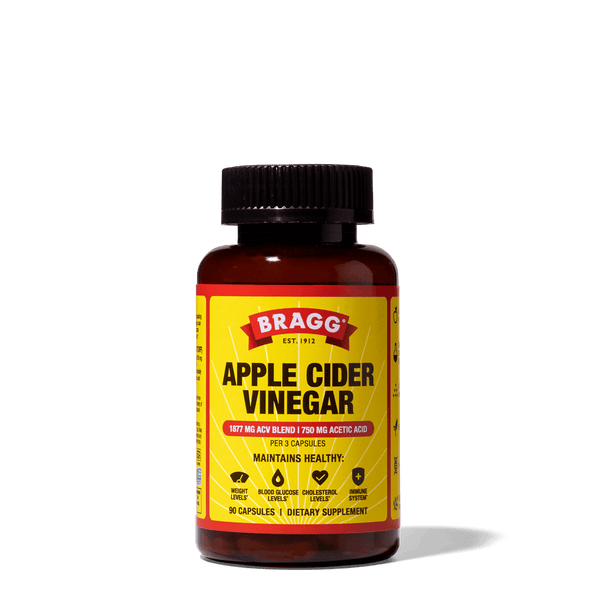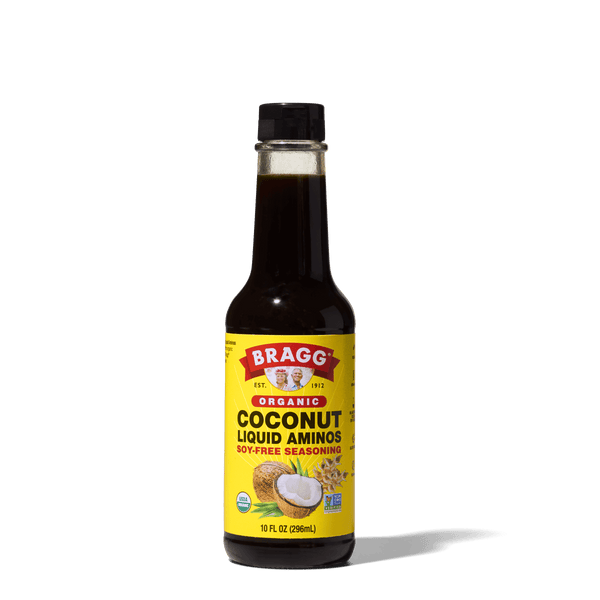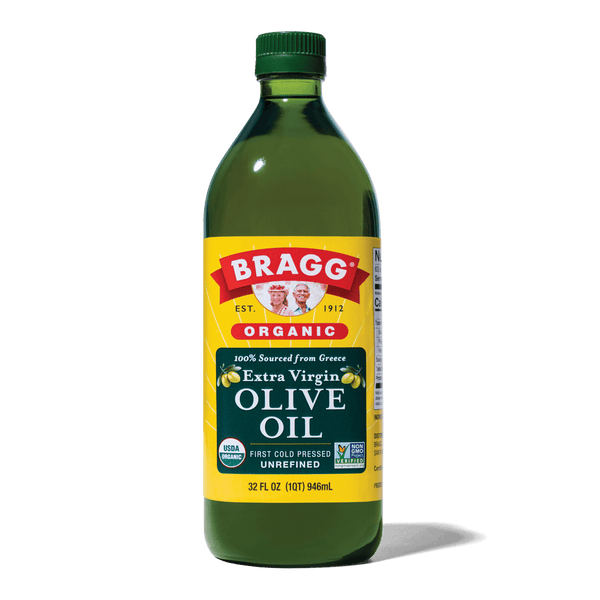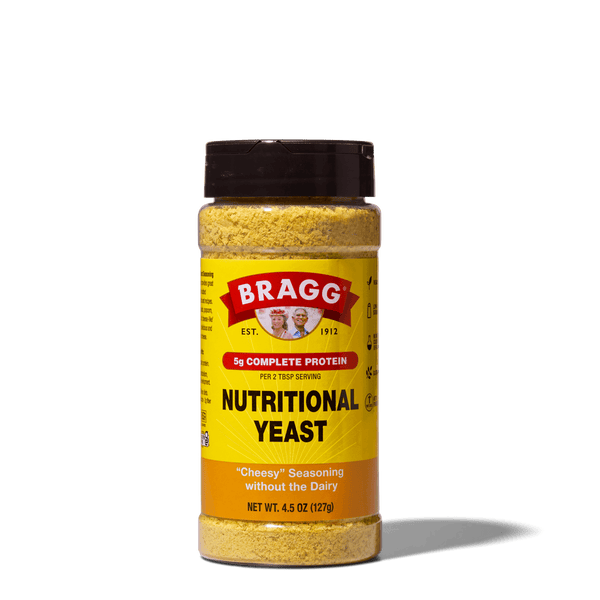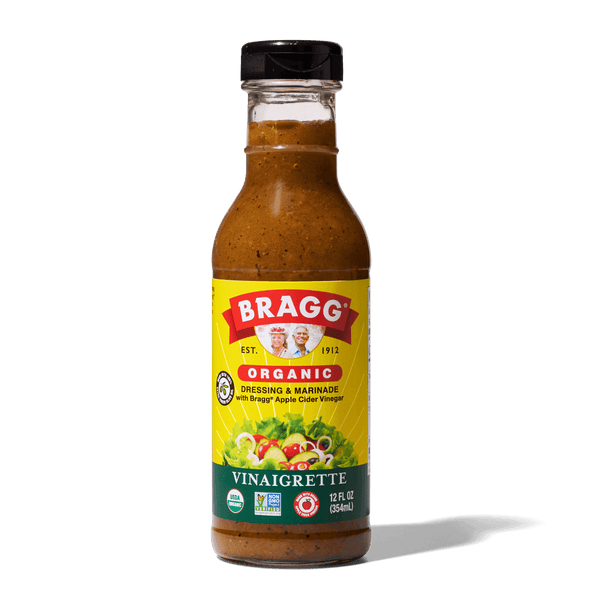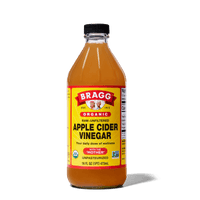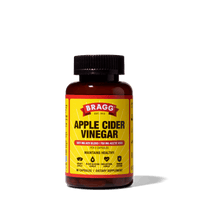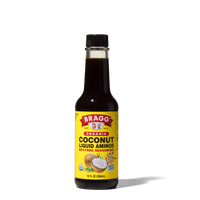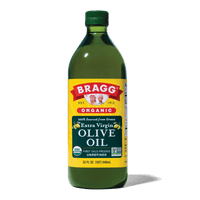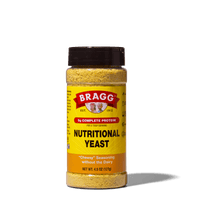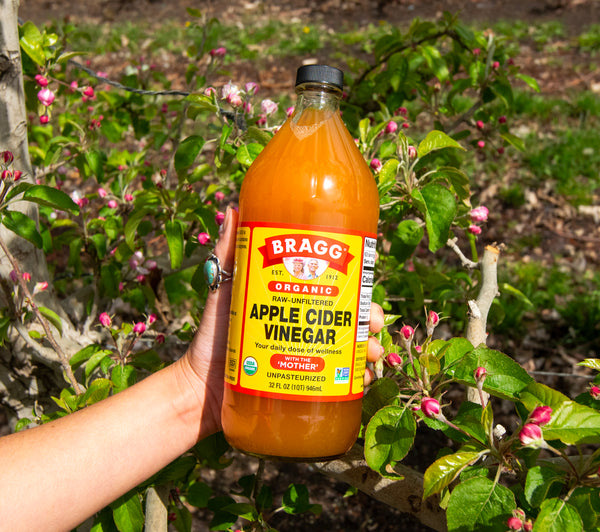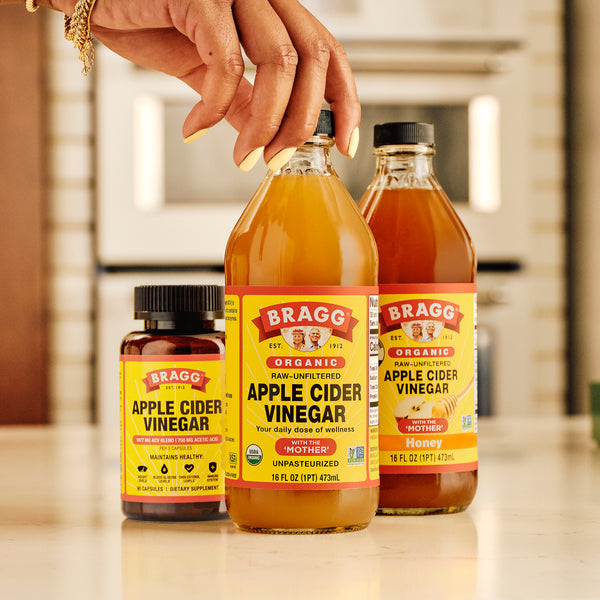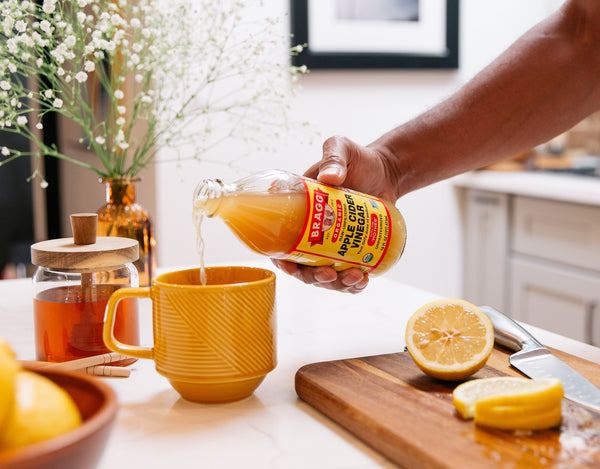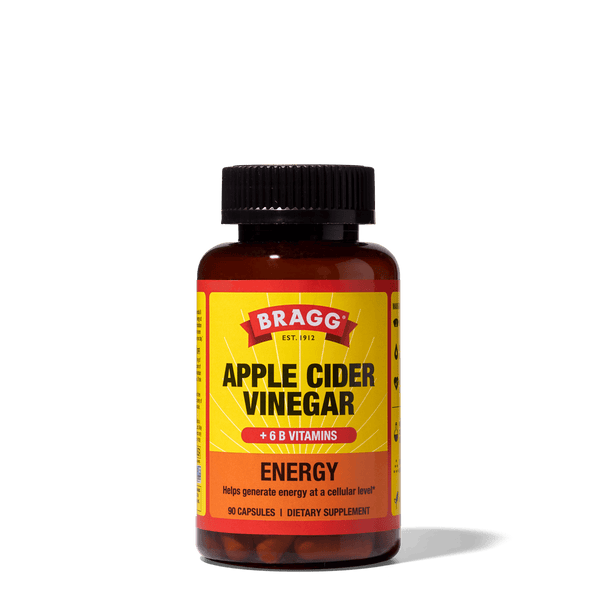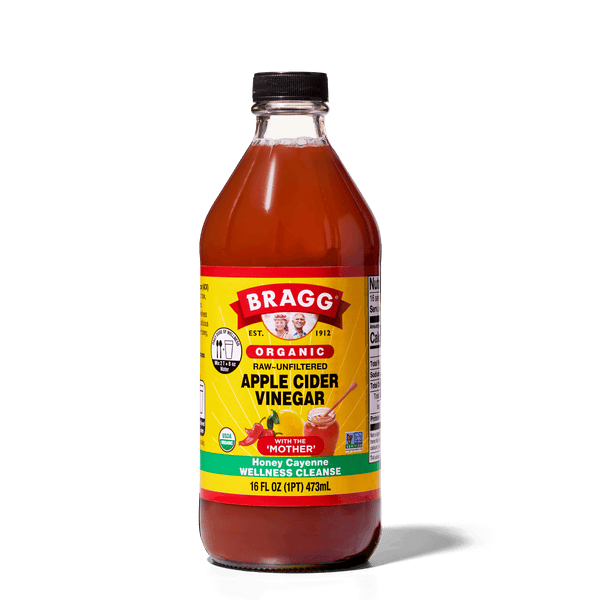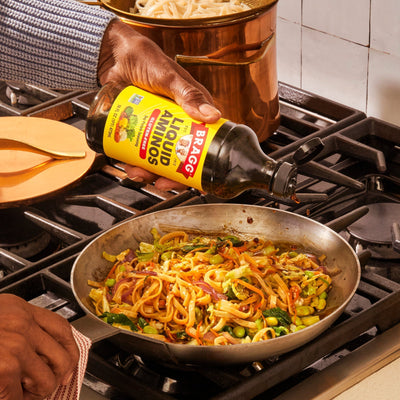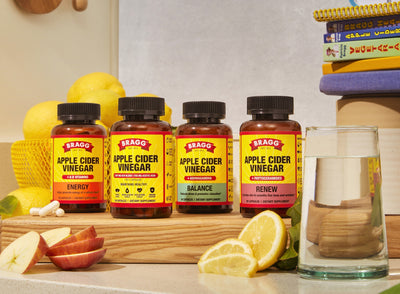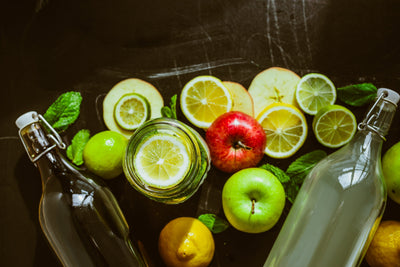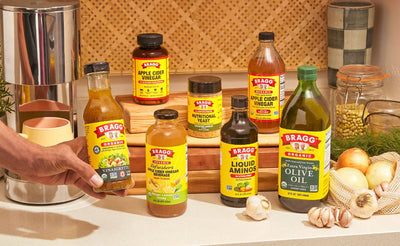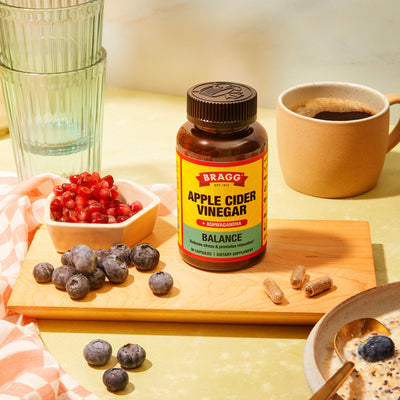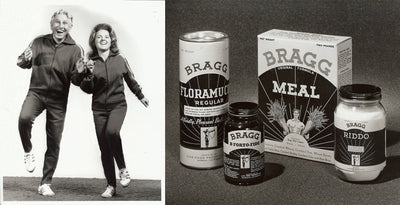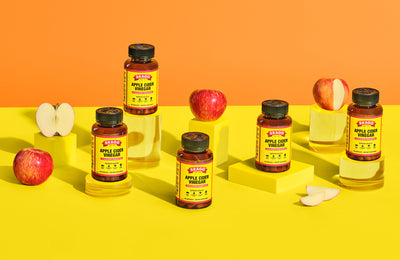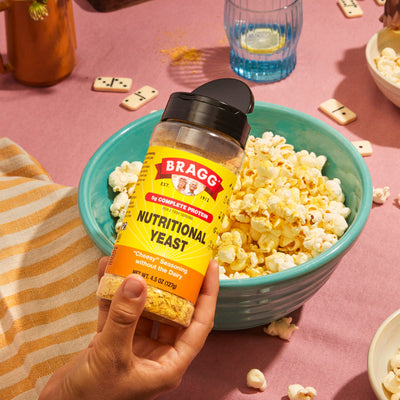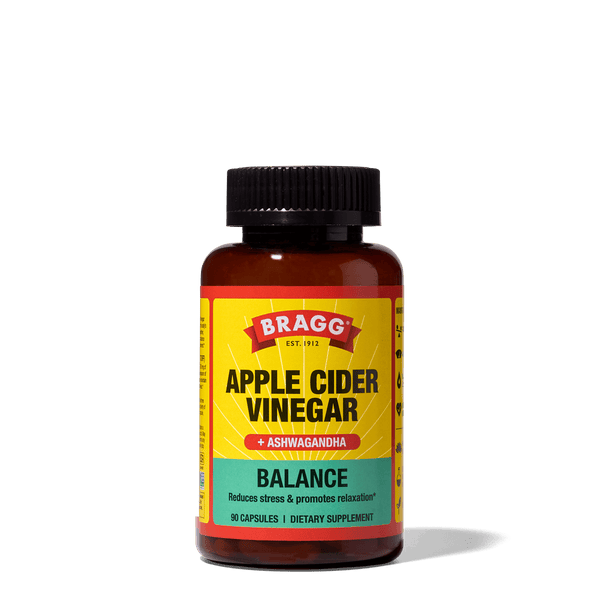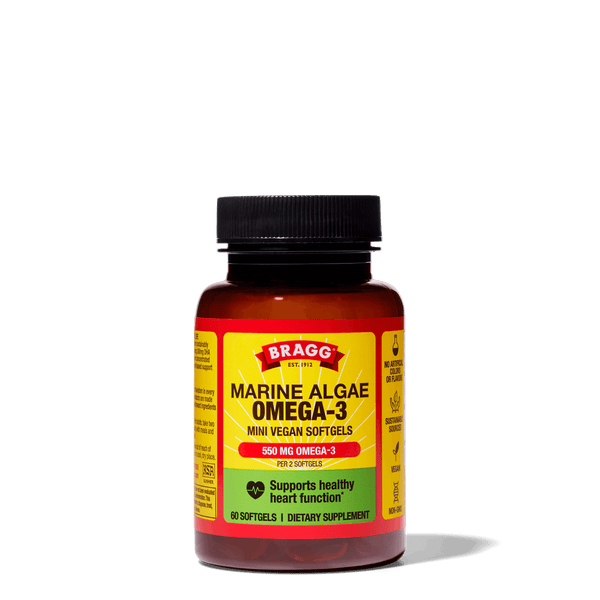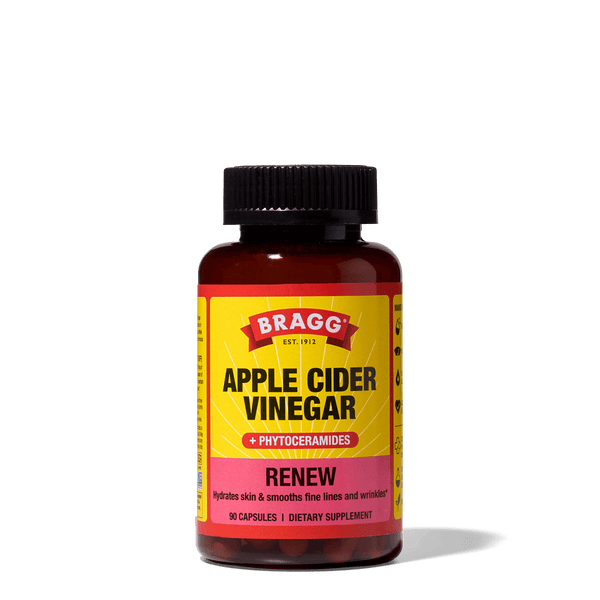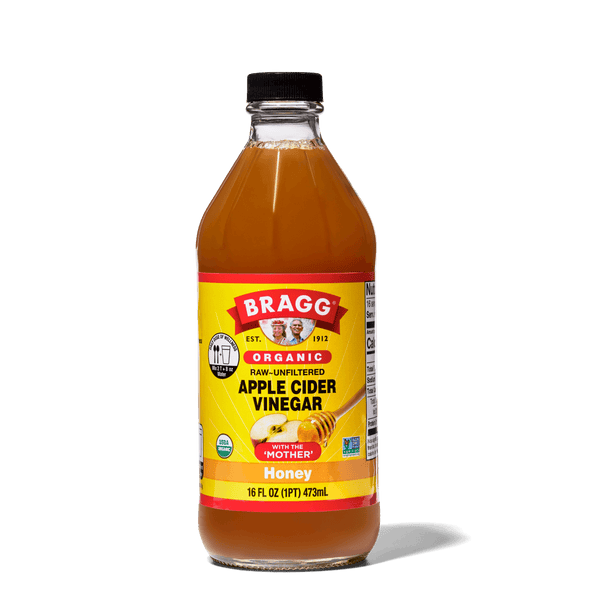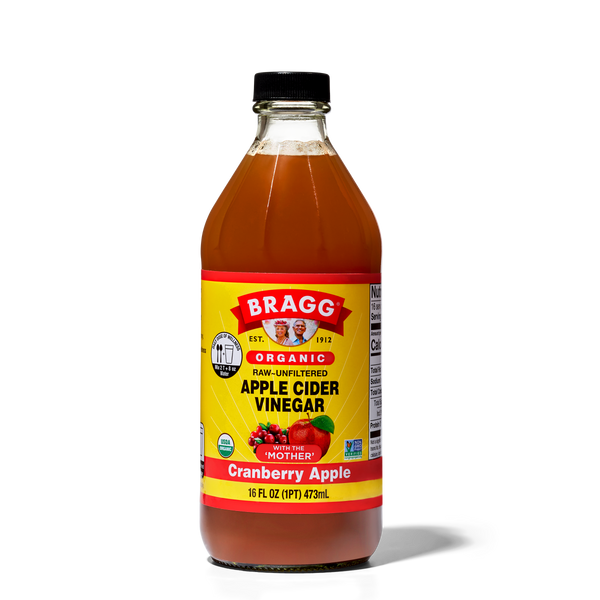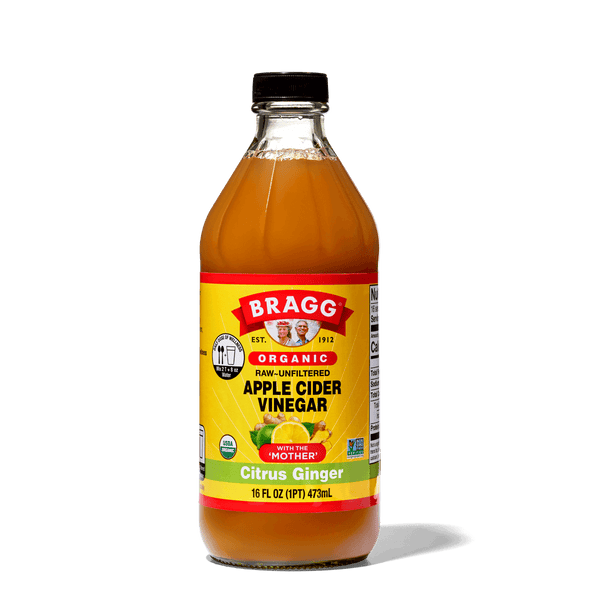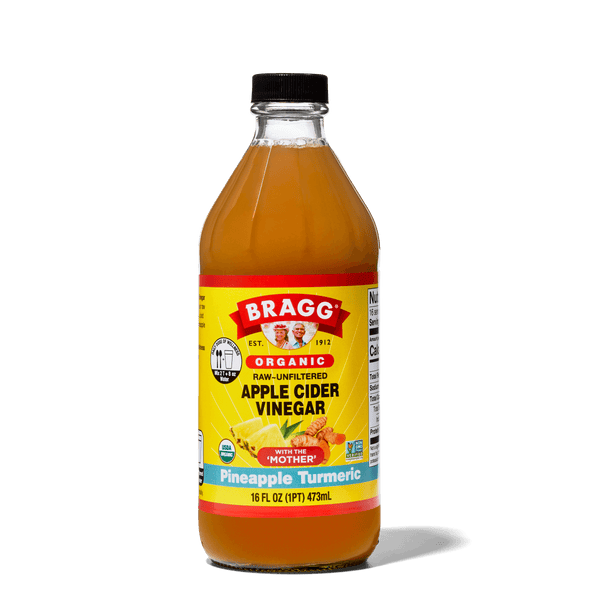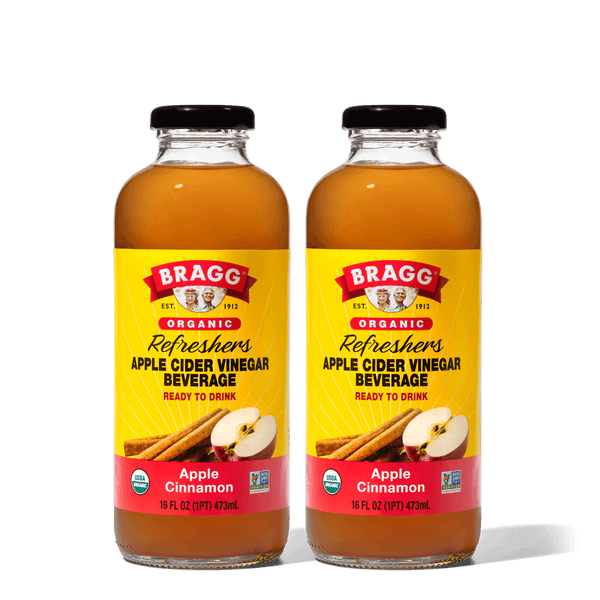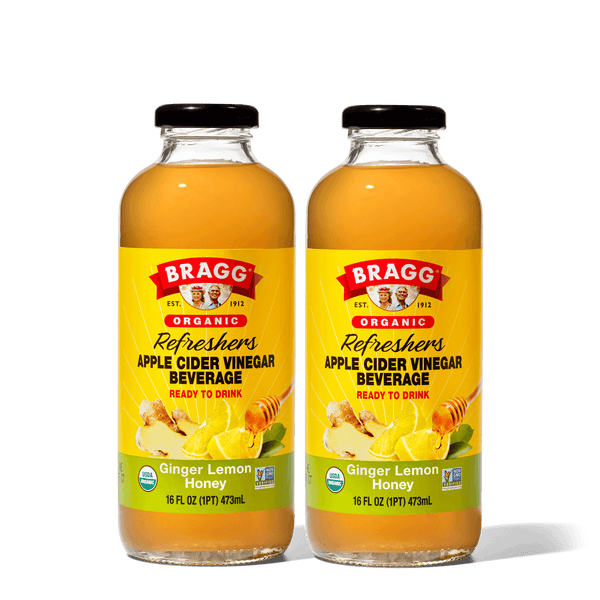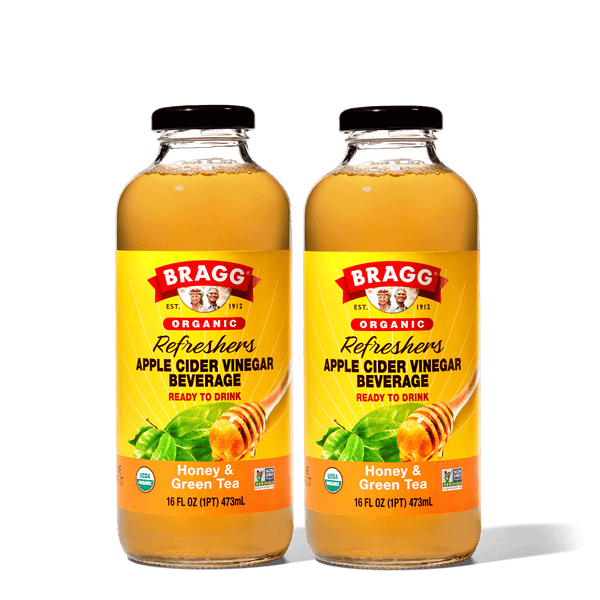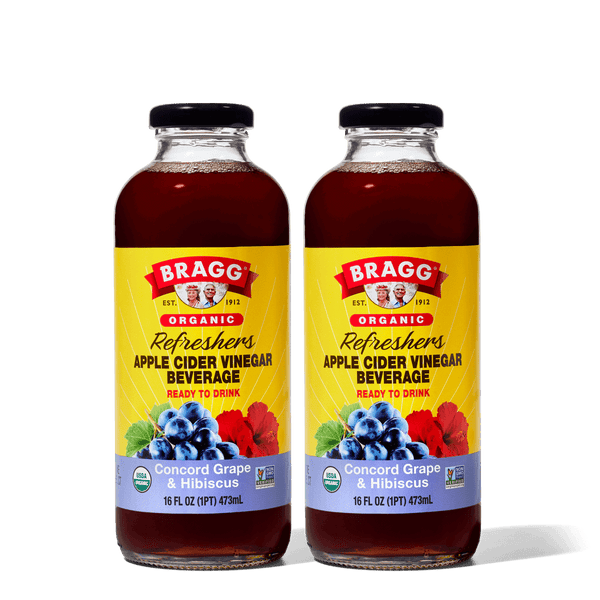We’ve all been there, walking down the grocery aisle and just grabbing the most convenient bottle we see, but here’s the thing with apple cider vinegar…
While selecting any bottle from the store may seem sufficient, not all AC bottles are of the same quality and standard for culinary purposes. Choosing a premium quality AC that's free of excessive processing is crucial for enhancing flavor profiles and reaping the health benefits that natural AC offers in cooking endeavors.
If this has you wondering if that bottle in your pantry is the best choice for salad dressings, marinades, or bold new recipes, you’re not alone. This guide breaks down the key differences between types of ACV and helps you pick the right one for your kitchen.
What Makes Apple Cider Vinegar Unique?
Apple cider vinegar just didn’t appear there. What you’re looking at is a tested and true fermentation process of apple juice, which transforms into a tangy, slightly sweet liquid bursting with complexity. In this fermentation process, acetic acid is created which sets ACV apart from any other vinegar on the market.
It’s responsible not only for that signature bite but also for a range of cooking benefits:
-
Flavor Balancing: Looking to add a little je ne sais pas, to your dishes? Acetic acid can add depth to both sweet and savory notes.
-
Tenderizing Proteins: Let acetic acid do the heavy work. When used in marinades, the acidity helps break down proteins in meat, making them more tender and flavorful [¹].
-
Food Preservation: Acetic acid’s low pH helps slow the growth of spoilage-causing microbes, making it useful in pickling and preserving [²].
And that’s all thanks to the acetic acid content created through the fermentation process. But do all apple cider vinegars contain acetic acid? And at what quality? Here’s what to look for when selecting apple cider vinegar for cooking:
The Presence of the “Mother”
We can’t talk acetic acid without talking about The “Mother”...
You know… that cloudy, stringy substance you might see floating at the bottom of an unfiltered bottle of ACV [³].
For those put off by its appearance, don’t be! It’s a byproduct of the fermentation process, packed with enzymes, orange acids, and beneficial bacteria… and it’s actually good for you!
While filtered ACVs offer a clear appearance, they often lack the depth of flavor and natural complexity carried by the “Mother." For authentic taste and optimal versatility, choose ACV such as Bragg®’s Organic Apple Cider Vinegar labeled "raw,”” unfiltered," and “with the ‘mother.’”
Organic vs. Non-Organic
If “organic” isn’t the buzzword of the century, we don’t know what is, so we hate to harp on organic this and organic that… but really…organic matters.
Organic ACV is made from apples grown without synthetic pesticides or fertilizers, ensuring a purer product free from chemical residues. While non-organic options may appeal to budget-conscious shoppers, they often compromise on quality and flavor.
If you’re someone who prioritizes environmentally friendly and toxin-free ingredients, organic is non-negotiable.
Fermentation Process
One key factor that sets organic ACV apart from its non-organic counterparts is the fermentation process [⁴]. Organic ACV is made through a natural fermentation process using organic apples, without any synthetic additives or preservatives. Additionally, organic ACV is made without artificial additives, ensuring a clean-label product that aligns with natural food standards.
This fermentation process is what gives ACV its signature tangy and acidic taste. During the fermentation process, naturally occurring bacteria and yeast feed on the sugars in apples, converting them into acetic acid. This acetic acid is what gives ACV its distinctive flavor and smell.
On the other hand, lower-cost, mass-produced options may use shortcuts, such as artificial yeasts or added sugars, resulting in a less authentic product.
Why Cheap Apple Cider Vinegars Fall Short
It can be tempting to save a few bucks and reach for bargain-bin ACV, but doing so often comes at a cost. Mass-produced, inexpensive ACV is typically filtered, pasteurized, and made without the Mother.
These options lose the depth of flavor that sets high-quality ACV apart, resulting in a flat, one-dimensional product. Worse still, many low-cost brands dilute their vinegar, leading to a weaker, watered-down taste that can underwhelm your dishes.
Cheap ACV may also lack the “Mother” or be made with lower-quality fermentation processes, cutting out the very components that give the vinegar its distinctive character. It may also contain artificial additives, which can affect its natural flavors.
In other words…If you’re investing time and energy into creating delicious meals, don’t undermine all that effort with a product that doesn’t match up.
So, how do you know the quality of the ACV you’re buying? We’ll show you.

What to Look For in a Cooking ACV
1. The Presence of the “Mother”
The “Mother” is the cloudy, stringy substance you might see floating at the bottom of an unfiltered ACV bottle. While it may look unusual, it’s a natural byproduct of fermentation and contains naturally occurring enzymes and bacteria that give ACV its signature appearance and flavor depth.
Filtered ACVs may appear more refined, but often lack the complexity that unfiltered varieties bring to your recipes. For full-bodied flavor, choose a vinegar labeled “raw,” “unfiltered,” and “with the ‘Mother.’”
2. Organic vs. Non-Organic
Organic ACV is made from apples grown without synthetic pesticides or fertilizers, an important distinction for those who prioritize ingredient sourcing. It typically offers a cleaner, more naturally bright flavor that’s ideal for cooking.
While non-organic options may be more budget-friendly, they may compromise on overall flavor and process transparency.
3. The Fermentation Process
Look for brands that use traditional fermentation methods. These typically involve allowing apple juice to naturally ferment over time, without added sugars or synthetic yeasts. This process is what gives ACV its distinct tang and complexity.
Mass-produced ACVs, on the other hand, may use shortcuts, like pasteurization, added sugars, or rapid fermentation, that result in a more muted or one-dimensional flavor.
Types of Vinegar: A Quick Comparison
There’s a vinegar for every occasion. Common types include:
-
Apple Cider Vinegar: Made from fermented apples; versatile, mildly sweet, and tangy.
-
Balsamic Vinegar: Dark, aged, and sweet; best for glazes and finishing dishes.
-
White Wine Vinegar: Lighter, more delicate; great for vinaigrettes and reductions.
-
Rice Vinegar: Subtly sweet and less acidic; ideal for Asian cuisine.
-
Distilled White Vinegar: Sharp and neutral; more often used in pickling or cleaning.

How to Use Apple Cider Vinegar in Cooking
The beauty of ACV lies in its versatility. Here’s how you can use it to elevate your dishes:
Salads and Dressings
-
Zesty Vinaigrettes: Shake up a tangy, crowd-pleasing dressing by mixing apple cider vinegar (ACV) with olive oil, mustard, and your favorite seasonings. Your salads will thank you. Enhance the flavor by adding fresh herbs like basil and cilantro.
-
Quick Pickles: Got veggies? ACV transforms cucumbers, carrots, or radishes into crisp, pickled perfection in no time. Easy, tasty, and impressive.
Marinades:
-
Flavor-Packed Marinades: ACV is your secret weapon for tender, flavorful meats and veggies. Just toss it in your marinade, let it work its magic, and enjoy the results. Additionally, incorporating lemon juice and black pepper can further enhance the flavor, tenderize the meat, and create a desirable crust without overpowering the dish.
Sauces:
-
BBQ Brilliance: Swap out white vinegar for ACV in your BBQ sauce, and suddenly, it’s a next-level smoky, tangy masterpiece. Adding soy sauce and Worcestershire sauce can further enhance the flavor profile.
-
Brighten Creamy Sauces: A dash of ACV cuts through the richness, making your creamy sauces pop with flavor.
-
Pork Pan Sauce: Deglaze your pan with ACV after cooking pork tenderloin, and voilà, instant gourmet sauce in minutes.
Mocktails:
-
Refreshing Spritzer: Mix sparkling water, apple juice, and a splash of ACV for a crisp and refreshing mocktail. It is important to dilute ACV in a large glass of water to moderate its tart flavor for consumption.
-
Tropical Twist: Blend pineapple juice, mango puree, coconut milk, and ACV for a tropical twist on the classic pina colada.
-
Apple Cider Mocktail: Fill a glass with ice cubes. Add sparkling water, fresh lime juice, and Citrus Ginger Apple Cider Vinegar Blend. Stir well, garnish with mint, and enjoy!
Soups and Stews:
-
Flavor Boost: Just a splash of ACV can transform a good soup or stew into a great one by brightening up the flavors. Additionally, incorporating basil can further enhance the flavor of soups and stews, providing a fresh and rounded taste.
Baking:
-
Soft & Tender Bakes: Add ACV to your batters and doughs for an irresistibly tender crumb. Your baked goods will be fluffier than ever. Consider adding cinnamon to enhance the flavor complexity of your baked goods.
-
Perfectly-Risen Cakes: Pair ACV with baking powder, and you’ll get cakes that rise beautifully and have a smooth, pro-level texture.
Wondering where to start? Check out our community cookbook.
Why Stop at Cooking?
Bragg® Apple Cider Vinegar (ACV) isn’t just for salad dressing; its natural acidity makes it a go-to staple in a wide range of routines. Here are some other ways to incorporate Bragg® ACV into your routine:
-
DIY Hair Rinse: Combine 1 part Bragg® ACV with 5 parts water for a scalp-refreshing rinse. It helps reduce buildup, tighten pores, and enhance shine, all while supporting your scalp’s natural pH.
-
ACV Spa Day Magic: Try spa water infused with lemon, lime, orange, and Bragg® ACV for a refreshing drink that feels indulgent and hydrating.
-
Level Up Skincare: Pair the iconic Bragg® ACV with Aztec Secret Indian Healing Clay for a deep-cleansing facial that promotes clearer-looking skin.
-
Clean Beauty Toner: Skip harsh, fragrance-heavy store-bought toners, dilute Bragg® ACV with water to create a gentle, pH-balancing facial toner that clarifies without stripping.
The OG of ACV...Bragg®
When it comes to the best ACV for cooking, Bragg®’s Apple Cider Vinegar consistently tops the charts.
Here’s why Bragg® is the go-to choice for ACV enthusiasts and culinary experts alike:
Premium Ingredients
Made from organically grown apples, our ACV is raw, unfiltered, and contains the “Mother.” The emphasis on quality ingredients ensures that every bottle offers maximum flavor and beneficial components.
Trusted Fermentation Methods
We employ time-honored fermentation techniques to produce ACV with a perfect balance of tanginess, sweetness, and depth.
Bragg® Apple Cider Vinegar is made using a traditional two-step fermentation process that starts with fresh-pressed organic apples. Naturally occurring yeast first ferments the sugars into alcohol, then the “Mother” converts that alcohol into acetic acid. To maintain a consistent 5% acidity (despite natural variation between apple varieties), each batch is carefully tested and standardized at bottling by our Quality Assurance team.
Versatile Uses
Our ACV enhances salad dressings, marinades, sauces, and even baked goods with its vibrant flavor profile. It’s not just for cooking either; use it in drinks, your beauty routine, or even as a natural cleaning product for a variety of purposes.
Reputation and Credibility
With decades of history and countless positive reviews, Bragg® has cemented its place as a kitchen and wellness staple trusted by millions worldwide.
Want to learn more about us? Check out how we’re here to help you live more vibrantly.

FAQs
Can I use apple cider vinegar instead of white vinegar in baking?
Absolutely! Apple cider vinegar can be used interchangeably with white vinegar in most recipes. Just make sure to adjust the amount slightly, as apple cider vinegar has a slightly sweeter taste than white vinegar.
Will my baked goods taste like vinegar if I use ACV?
No, not at all! The small amount of ACV used in baking is barely detectable and only adds a subtle tanginess that enhances the overall flavor of your baked goods.
Can I use any type of apple cider vinegar for baking?
It's recommended to use raw, unfiltered apple cider vinegar for baking as it contains the "Mother," which is a beneficial bacteria that adds flavor and nutritional benefits.
Choose the Right ACV for Culinary Excellence
Not all apple cider vinegar is created equal. Whether it’s Bragg® or another raw, unfiltered brand, choosing the right ACV can transform your cooking and amplify the flavors and benefits of your dishes. With its unmatched flavor, raw integrity, and unfiltered goodness, Bragg®’s Apple Cider Vinegar is our top pick for cooking with confidence.
Don’t settle for less in the kitchen. Elevate your recipes with a quality ACV like Bragg® and taste the difference it makes.
Sources
1. https://pmc.ncbi.nlm.nih.gov/articles/PMC9602021/
2. https://pmc.ncbi.nlm.nih.gov/articles/PMC10963064/
3. https://pubmed.ncbi.nlm.nih.gov/25648676/
4. https://www.Bragg®.com/blogs/science/apple-cider-vinegar-how-it-is-made-and-what-makes-it-so-good
